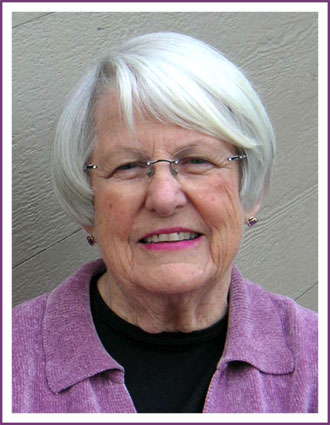JANE Vallett Southerland NIEBERGALL

• Native Issues
• Early Childhood Ed
• Publishing
Inducted: 2014
Bethel
JANE Vallett Southerland NIEBERGALL
Jane Vallett Sutherland Niebergall is a happy, positive, giving woman born in Hollywood and growing up in Glendale, Calif. After graduation in 1953 from a small college in Hollywood she married and started a family, having two children. Several years later her husband died in an accident. By 1965 she had a teaching certificate and earned a Master’s Degree in Educational Supervision. During that spring she received a call from Juneau and was invited to work on a team of people for Head Start, traveling the Bush. This began her lifelong love of Alaskans and the Alaska Bush.
It was through this introduction to rural life and education that Niebergall was able, early in Alaska’s statehood, to experience the needs of the people and pave the way for her later work in Juneau for the Department of Education with the new para-professional Native people training to become Early Childhood teachers. But the Department of Education had not experienced what Niebergall had in all her travels for Head Start and Native teacher training would not happen.
This was hard news but Niebergall’s Head Start boss gave her the go-ahead to start training without the Department of Education, and thus was born the institutionalized training of Native women who would be the first Head Start teachers. There were no other programs for early childhood education training of Alaska Natives. Niebergall saw the transition from Governor Egan to Governor Hickel, worked for ISEGR (now known as the Institute of Social and Economic Research) in Fairbanks, built a cabin in Aniak and even wrote her doctoral dissertation for a Doctorate Degree in Education. Sadly, this handwritten dissertation was accidentally dumped into the Kuskokwim and, being the only copy and with all of Niebergall’s other work still raging on, she quietly left the degree on the shelf and never submitted her dissertation. Niebergall has worked for Alaska Methodist University, Anchorage Community College, Kenai Community College and others. Her life of service to Alaskans and education is still going strong and Niebergall is now 83 years old!
View Extended Bio